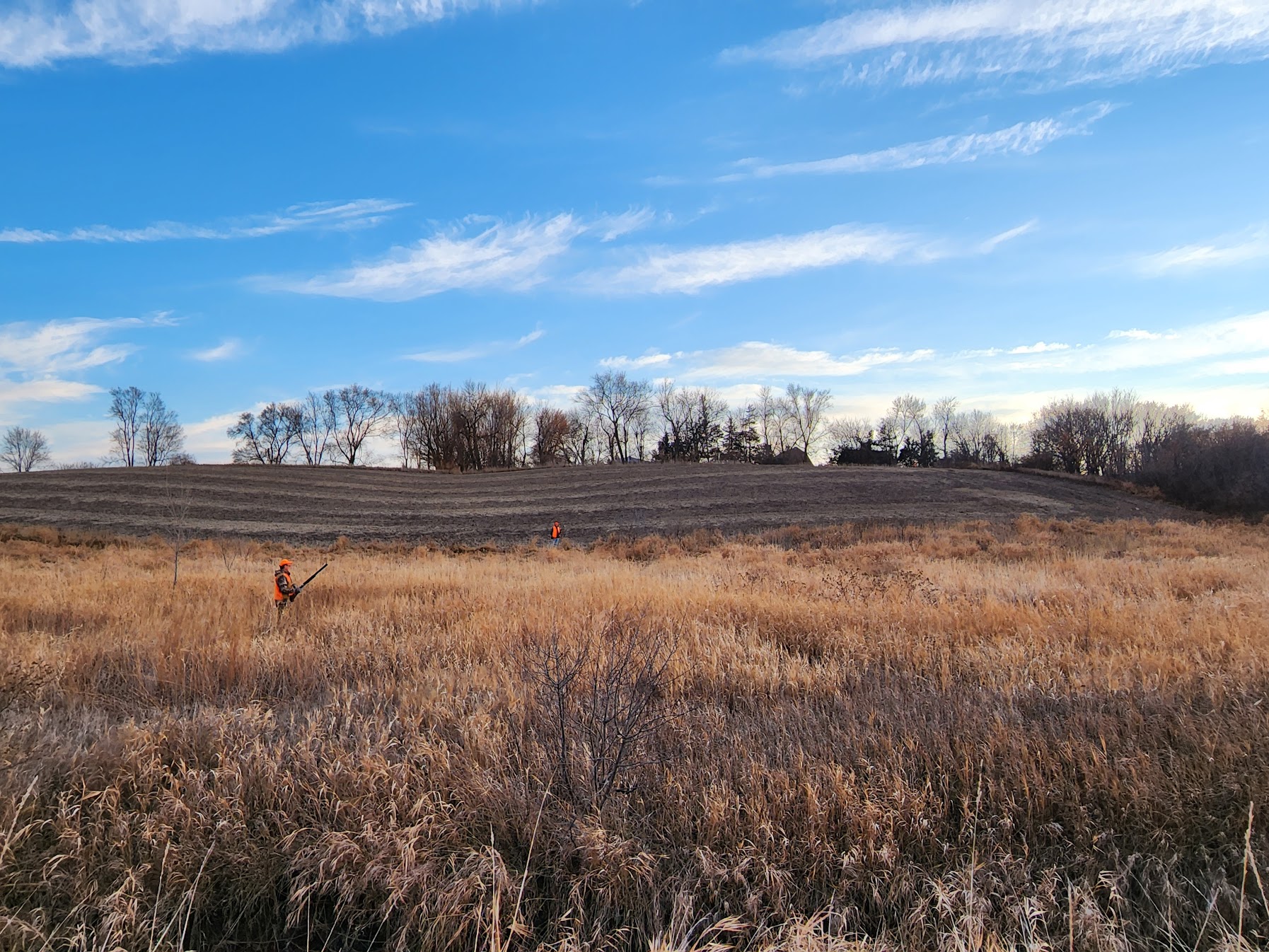[{"id":335,"link":"https:\/\/uplandrookie.com\/a-rollercoaster-of-feathers-wrapping-up-pheasant-season-in-the-great-north\/","name":"a-rollercoaster-of-feathers-wrapping-up-pheasant-season-in-the-great-north","thumbnail":{"url":false,"alt":false},"title":"A Rollercoaster of Feathers: Wrapping Up Pheasant Season in the Great North","author":{"name":"theuplandrookie","link":"https:\/\/uplandrookie.com\/author\/theuplandrookie\/"},"date":"Dec 31, 2023","dateGMT":"2023-12-31 20:28:03","modifiedDate":"2024-01-01 15:52:40","modifiedDateGMT":"2024-01-01 21:52:40","commentCount":"0","commentStatus":"open","categories":{"coma":"<a href=\"https:\/\/uplandrookie.com\/category\/general\/\" rel=\"category tag\">General<\/a>","space":"<a href=\"https:\/\/uplandrookie.com\/category\/general\/\" rel=\"category tag\">General<\/a>"},"taxonomies":{"post_tag":"<a href='https:\/\/uplandrookie.com\/tag\/bird-dog\/' rel='post_tag'>Bird Dog<\/a><a href='https:\/\/uplandrookie.com\/tag\/family-hunt\/' rel='post_tag'>Family Hunt<\/a><a href='https:\/\/uplandrookie.com\/tag\/mn-pheasant-hunting\/' rel='post_tag'>MN Pheasant Hunting<\/a><a href='https:\/\/uplandrookie.com\/tag\/next-gen-hunter\/' rel='post_tag'>Next gen hunter<\/a><a href='https:\/\/uplandrookie.com\/tag\/pheasant-education\/' rel='post_tag'>Pheasant Education<\/a><a href='https:\/\/uplandrookie.com\/tag\/pheasant-habitat\/' rel='post_tag'>Pheasant habitat<\/a><a href='https:\/\/uplandrookie.com\/tag\/upland-hunting\/' rel='post_tag'>Upland Hunting<\/a><a href='https:\/\/uplandrookie.com\/tag\/upland-hunting-gear\/' rel='post_tag'>Upland Hunting Gear<\/a>"},"readTime":{"min":3,"sec":22},"status":"publish","excerpt":""},{"id":296,"link":"https:\/\/uplandrookie.com\/time-for-my-danners-to-retire\/","name":"time-for-my-danners-to-retire","thumbnail":{"url":"https:\/\/i0.wp.com\/uplandrookie.com\/wp-content\/uploads\/2023\/11\/Danner-Boots-scaled.jpg?fit=2560%2C1920&ssl=1","alt":"Danner boots drying by a fireplace"},"title":"Time for my Danner's to retire!","author":{"name":"theuplandrookie","link":"https:\/\/uplandrookie.com\/author\/theuplandrookie\/"},"date":"Nov 30, 2023","dateGMT":"2023-11-30 22:26:52","modifiedDate":"2025-05-07 22:53:09","modifiedDateGMT":"2025-05-08 03:53:09","commentCount":"0","commentStatus":"open","categories":{"coma":"<a href=\"https:\/\/uplandrookie.com\/category\/general\/\" rel=\"category tag\">General<\/a>, <a href=\"https:\/\/uplandrookie.com\/category\/product-reviews\/\" rel=\"category tag\">Product Reviews<\/a>","space":"<a href=\"https:\/\/uplandrookie.com\/category\/general\/\" rel=\"category tag\">General<\/a> <a href=\"https:\/\/uplandrookie.com\/category\/product-reviews\/\" rel=\"category tag\">Product Reviews<\/a>"},"taxonomies":{"post_tag":"<a href='https:\/\/uplandrookie.com\/tag\/upland-hunting\/' rel='post_tag'>Upland Hunting<\/a><a href='https:\/\/uplandrookie.com\/tag\/upland-hunting-boot\/' rel='post_tag'>Upland Hunting Boot<\/a><a href='https:\/\/uplandrookie.com\/tag\/upland-hunting-gear\/' rel='post_tag'>Upland Hunting Gear<\/a>"},"readTime":{"min":1,"sec":40},"status":"publish","excerpt":""},{"id":280,"link":"https:\/\/uplandrookie.com\/the-upland-rookie-chronicles-from-zero-to-upland-hero\/","name":"the-upland-rookie-chronicles-from-zero-to-upland-hero","thumbnail":{"url":"https:\/\/i0.wp.com\/uplandrookie.com\/wp-content\/uploads\/2023\/11\/Upland-Rookie-Hunter-with-Bird-dog-1-scaled.jpg?fit=2560%2C1920&ssl=1","alt":""},"title":"The Upland Rookie Chronicles: From Zero to Upland Hero","author":{"name":"theuplandrookie","link":"https:\/\/uplandrookie.com\/author\/theuplandrookie\/"},"date":"Nov 1, 2023","dateGMT":"2023-11-01 22:39:23","modifiedDate":"2023-12-04 10:57:10","modifiedDateGMT":"2023-12-04 16:57:10","commentCount":"0","commentStatus":"open","categories":{"coma":"<a href=\"https:\/\/uplandrookie.com\/category\/general\/\" rel=\"category tag\">General<\/a>","space":"<a href=\"https:\/\/uplandrookie.com\/category\/general\/\" rel=\"category tag\">General<\/a>"},"taxonomies":{"post_tag":"<a href='https:\/\/uplandrookie.com\/tag\/pheasant-habitat\/' rel='post_tag'>Pheasant habitat<\/a><a href='https:\/\/uplandrookie.com\/tag\/upland-hunting\/' rel='post_tag'>Upland Hunting<\/a>"},"readTime":{"min":6,"sec":24},"status":"publish","excerpt":""},{"id":261,"link":"https:\/\/uplandrookie.com\/are-you-feeling-physically-ready-for-the-season\/","name":"are-you-feeling-physically-ready-for-the-season","thumbnail":{"url":"https:\/\/i0.wp.com\/uplandrookie.com\/wp-content\/uploads\/2023\/10\/pexels-photo-671555.jpeg?fit=1880%2C1191&ssl=1","alt":"green meadows near mountain under calm sky"},"title":"Are you feeling physically ready for the season?","author":{"name":"theuplandrookie","link":"https:\/\/uplandrookie.com\/author\/theuplandrookie\/"},"date":"Oct 13, 2023","dateGMT":"2023-10-13 22:12:12","modifiedDate":"2023-11-02 09:38:40","modifiedDateGMT":"2023-11-02 14:38:40","commentCount":"0","commentStatus":"open","categories":{"coma":"<a href=\"https:\/\/uplandrookie.com\/category\/general\/\" rel=\"category tag\">General<\/a>","space":"<a href=\"https:\/\/uplandrookie.com\/category\/general\/\" rel=\"category tag\">General<\/a>"},"taxonomies":{"post_tag":"<a href='https:\/\/uplandrookie.com\/tag\/exercise\/' rel='post_tag'>Exercise<\/a><a href='https:\/\/uplandrookie.com\/tag\/physical-fitness\/' rel='post_tag'>Physical Fitness<\/a><a href='https:\/\/uplandrookie.com\/tag\/upland-hunting\/' rel='post_tag'>Upland Hunting<\/a>"},"readTime":{"min":1,"sec":14},"status":"publish","excerpt":""},{"id":214,"link":"https:\/\/uplandrookie.com\/essential-gear-for-upland-hunting-what-you-need-in-your-kit\/","name":"essential-gear-for-upland-hunting-what-you-need-in-your-kit","thumbnail":{"url":"https:\/\/i0.wp.com\/uplandrookie.com\/wp-content\/uploads\/2023\/10\/qtq80-3eRSqm.jpeg?fit=2160%2C1440&ssl=1","alt":"Upland Hunter and his dog"},"title":"Essential Gear for Upland Hunting: What You Need in Your Kit","author":{"name":"theuplandrookie","link":"https:\/\/uplandrookie.com\/author\/theuplandrookie\/"},"date":"Oct 3, 2023","dateGMT":"2023-10-03 21:03:30","modifiedDate":"2023-10-03 16:44:00","modifiedDateGMT":"2023-10-03 21:44:00","commentCount":"0","commentStatus":"open","categories":{"coma":"<a href=\"https:\/\/uplandrookie.com\/category\/educational\/\" rel=\"category tag\">Educational<\/a>, <a href=\"https:\/\/uplandrookie.com\/category\/product-reviews\/\" rel=\"category tag\">Product Reviews<\/a>","space":"<a href=\"https:\/\/uplandrookie.com\/category\/educational\/\" rel=\"category tag\">Educational<\/a> <a href=\"https:\/\/uplandrookie.com\/category\/product-reviews\/\" rel=\"category tag\">Product Reviews<\/a>"},"taxonomies":{"post_tag":"<a href='https:\/\/uplandrookie.com\/tag\/pheasant-education\/' rel='post_tag'>Pheasant Education<\/a><a href='https:\/\/uplandrookie.com\/tag\/pheasant-habitat\/' rel='post_tag'>Pheasant habitat<\/a><a href='https:\/\/uplandrookie.com\/tag\/upland-hunting\/' rel='post_tag'>Upland Hunting<\/a><a href='https:\/\/uplandrookie.com\/tag\/upland-hunting-boot\/' rel='post_tag'>Upland Hunting Boot<\/a><a href='https:\/\/uplandrookie.com\/tag\/upland-hunting-gear\/' rel='post_tag'>Upland Hunting Gear<\/a>"},"readTime":{"min":6,"sec":21},"status":"publish","excerpt":"If you're about to dive into the exhilarating world of chasing pheasants through the wilds, then consider this your official initiation."},{"id":74,"link":"https:\/\/uplandrookie.com\/review-top-mens-boot-for-upland-hunting\/","name":"review-top-mens-boot-for-upland-hunting","thumbnail":{"url":"https:\/\/i0.wp.com\/uplandrookie.com\/wp-content\/uploads\/2023\/10\/pexels-photo-461615.jpeg?fit=1880%2C1253&ssl=1","alt":"black leather upland hunting boot on the grass"},"title":"Review: Top Men's Boot for Upland Hunting!","author":{"name":"theuplandrookie","link":"https:\/\/uplandrookie.com\/author\/theuplandrookie\/"},"date":"Oct 2, 2023","dateGMT":"2023-10-02 04:25:16","modifiedDate":"2023-10-03 16:23:02","modifiedDateGMT":"2023-10-03 21:23:02","commentCount":"0","commentStatus":"open","categories":{"coma":"<a href=\"https:\/\/uplandrookie.com\/category\/educational\/\" rel=\"category tag\">Educational<\/a>, <a href=\"https:\/\/uplandrookie.com\/category\/product-reviews\/\" rel=\"category tag\">Product Reviews<\/a>","space":"<a href=\"https:\/\/uplandrookie.com\/category\/educational\/\" rel=\"category tag\">Educational<\/a> <a href=\"https:\/\/uplandrookie.com\/category\/product-reviews\/\" rel=\"category tag\">Product Reviews<\/a>"},"taxonomies":{"post_tag":"<a href='https:\/\/uplandrookie.com\/tag\/pheasant-habitat\/' rel='post_tag'>Pheasant habitat<\/a><a href='https:\/\/uplandrookie.com\/tag\/upland-hunting\/' rel='post_tag'>Upland Hunting<\/a><a href='https:\/\/uplandrookie.com\/tag\/upland-hunting-boot\/' rel='post_tag'>Upland Hunting Boot<\/a><a href='https:\/\/uplandrookie.com\/tag\/upland-hunting-gear\/' rel='post_tag'>Upland Hunting Gear<\/a>"},"readTime":{"min":3,"sec":26},"status":"publish","excerpt":"When choosing the right hunting boots, it's essential to consider your specific needs, such as the terrain you'll be hunting in and the weather conditions."},{"id":30,"link":"https:\/\/uplandrookie.com\/blog-post-title\/","name":"blog-post-title","thumbnail":{"url":"https:\/\/i0.wp.com\/uplandrookie.com\/wp-content\/uploads\/2023\/10\/Pheasant-Hunting-near-old-crop-1.jpeg?fit=1794%2C1346&ssl=1","alt":"Walking some grassland with fellow Upland Hunters next to a crop field and wooded edges."},"title":"The Habitats, Feeding Patterns, and Behaviors of Pheasant!","author":{"name":"theuplandrookie","link":"https:\/\/uplandrookie.com\/author\/theuplandrookie\/"},"date":"Oct 1, 2023","dateGMT":"2023-10-01 17:52:44","modifiedDate":"2023-10-03 16:42:11","modifiedDateGMT":"2023-10-03 21:42:11","commentCount":"0","commentStatus":"closed","categories":{"coma":"<a href=\"https:\/\/uplandrookie.com\/category\/educational\/\" rel=\"category tag\">Educational<\/a>","space":"<a href=\"https:\/\/uplandrookie.com\/category\/educational\/\" rel=\"category tag\">Educational<\/a>"},"taxonomies":{"post_tag":"<a href='https:\/\/uplandrookie.com\/tag\/pheasant-education\/' rel='post_tag'>Pheasant Education<\/a><a href='https:\/\/uplandrookie.com\/tag\/pheasant-habitat\/' rel='post_tag'>Pheasant habitat<\/a><a href='https:\/\/uplandrookie.com\/tag\/upland-hunting\/' rel='post_tag'>Upland Hunting<\/a>"},"readTime":{"min":3,"sec":24},"status":"publish","excerpt":"Learn About the Pheasant Habitats, Feeding Patterns, and Behaviors of Pheasants, as well as the Best Times to Hunt Them!"}]

